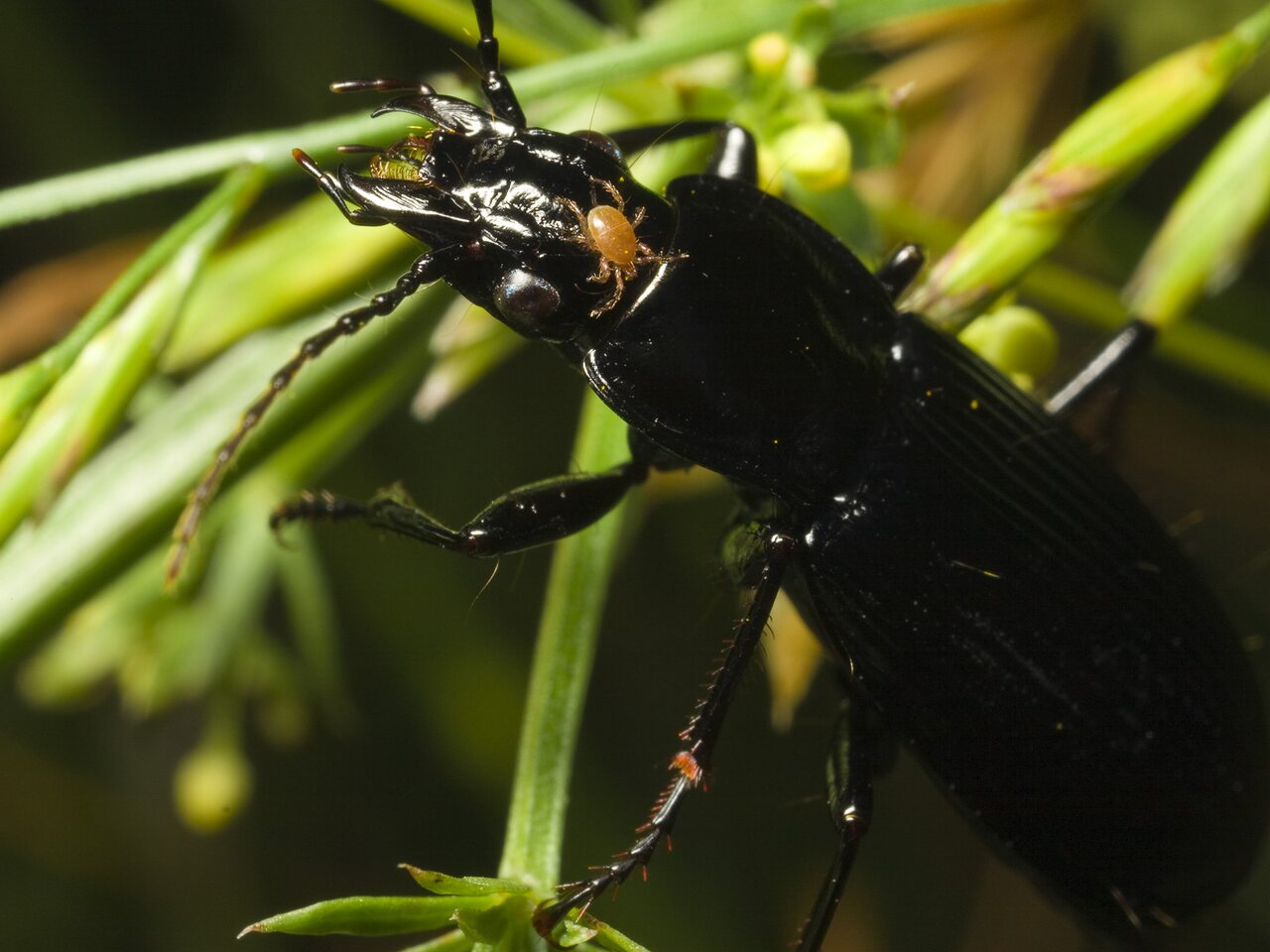
Pterostichus niger · juodasis smiltžygis
- great blackclock
- Große Grabkäfer, Gestreifte Schulterläufer
- juodasis smiltžygis
- melnais skraidulis
- szykoń czarny
A generally common species throughout Europe except for much of the Iberian Peninsula and the far north of Scandinavia, it is present on most of the Mediterranean islands with the notable exception of Sicily and extends east into Western Asia and sporadically into Siberia, it occurs in Asia Minor but does not extend south into North Africa. It is common and often abundant throughout the UK including all the islands north to Shetland. Typical habitats are damp woodland, grassland and moorland; on the continent it occurs from lowlands to above 2000 m where it is mostly associated with shaded forests and dense vegetation; it is otherwise generally eurytopic, only avoiding open areas exposed to the sun, and is often common in parkland, gardens and other disturbed areas, it is fully-winged (although flight muscle development varies), disperses by flight and is a notable coloniser, being present e.g. on most of the Baltic islands and quickly becoming established in new conifer plantations at higher latitudes. Adults are present year-round and are active from April or May until the autumn although they diapause during the warmest part of the summer, they are nocturnal, spending the day among matted vegetation or under logs, and are thought to be exclusively carnivorous, feeding on smaller insects and larvae, Reproduction occurs in late summer and autumn in the UK but often earlier on the continent; eggs are laid in the soil or among litter or under logs and larvae feed through the autumn and winter; they generally overwinter as third instars which are very cold-tolerant, having been observed active and feeding on the soil surface at night at temperatures below 0°C. Like the adults they are general surface predators which will take a wide range of insects and larvae, they continue feeding into the spring and pupate in the soil from March or April although this may be much later depending on larval development. Early adults will breed after a few weeks of maturation feeding and will then go on to overwinter but later adults, especially at higher latitudes, will breed only after overwintering, in the UK it is likely that reproduction always occurs in the autumn and that adults overwinter along with the larvae. In northern Europe, where the breeding season is longer, development from egg to adult has been measured at 280 days. Adults may be sampled by searching under logs and among matted vegetation in damp environments, pitfall trapping will often produce them in numbers but this is destructive and, at least for the purpose of recording this species, quite unnecessary.
The large and distinctive adults will soon become familiar in the field but there are a few superficially similar species that are also common and that occur in similar situations, most notably Abax parallelepipedus (Piller & Mitterpacher, 1783).
15-21 mm. Entirely shiny black, appendages black but for the pitchy-red tibial spines and claws. Head quadrate (measured to the tip of the protruding mandibles) with large convex eyes and converging temples, vertex smoothly and rather weakly convex, frons with two wide frontal furrows and with two setiferous punctures beside each eye. Antennae densely pubescent from the fourth segment. Pronotum transverse, broadest in front of the middle and curved to slightly protruding anterior angles and contracted and slightly sinuate to obtuse posterior angles, surface weakly convex and uneven between raised lateral margins and with deep, doubled basal fovea which extend towards the middle. Elytra with rounded shoulders and weakly curved laterally to a weak subapical constriction, striae unpunctured and deeply impressed, interstices convex throughout the third with several setiferous punctures which join the adjacent striae, lateral margins narrowly explanate and epipleura crossed before the apex. Tarsi 5-segmented, the apical segment glabrous ventrally. Front tarsi strongly dilated in the male.
‥